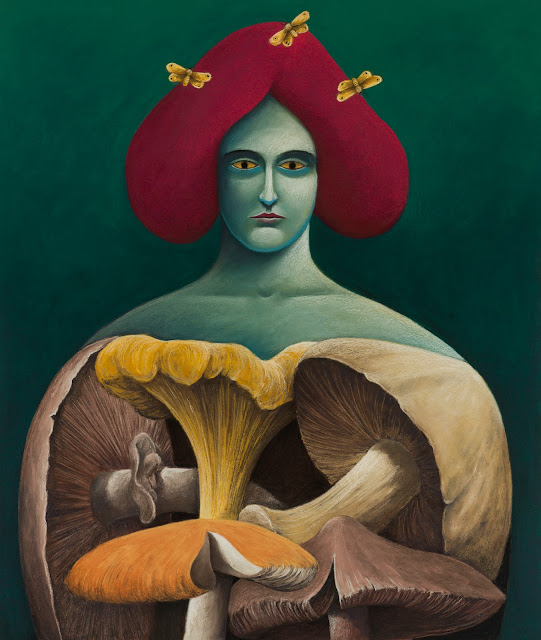 |
| Nicolas Party, Portrait with Mushrooms, 2019. Private collection. ©Nicolas Party. Photo Adam Reich |
Swiss-born artist Nicolas Party, known for his meticulously composed pastels, painted sculptures and colorful installations, is having his first exhibition in Canada. The Montreal Museum of Fine Arts (MMFA) has given the 41-year-old artist carte blanche in creating a dialogue between his works and a selection from the Museum's wind ranging collection. The exhibition runs February 12 - October 16, 2022.
Through more than 100 of his works and a series of murals realized in situ, Party presents a dreamlike experience on the theme of nature. The Museum's galleries provide the canvas onto which the visual artist and muralist -- cum curator and exhibition designer -- expresses the full measure of his art.
 |
Partial view of the exhibition Nicolas Party : L’heure mauve, Montreal Museum of Fine Arts. ©Nicolas Party. Photo MMFA, Jean-François Brière |
 |
| Nicolas Party, Sunrise, 2018. Private collection, courtesy of Xavier Hufkens, Brussels. ©Nicolas Party. Photo Isabelle Arthuis. The exhibition, named after the iconic painting L'Heure mauve (Mauve Twilight) by Canadian symbolist Ozias Leduc, found in the MMFA's collection, brings together watercolors, pastels and sculptures by Party -- including about 20 works that have yet to be exhibited. The landscapes, portraits and still lifes illustrate the complex and often inextricable ties that bind humans to nature. |
An exhibition set to song by Pierre Lapointe |



































.+Photography+Luke+Hayes.+Pigalle+Ring+Strass.jpg)
.+Photography+Luke+Hayes..jpg)






